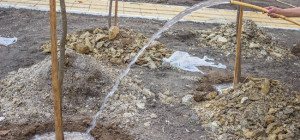A number of metals are often used in daily use both in the original form as well as converted into other forms or objects. Metals are immensely useful in our everyday lives, especially those of us who live an ultrafast and modern form of life. That is not to say that others do not have use for metals in their lives.
Metal is never made available to use in its absolute raw form. There are a number of tests and measurements done in the laboratory before they come to the common markets. These tests are useful in not only understanding the type of metal but also in determining the quality. Amongst these tests, there are routine tests which are not very hard to perform and then, there are those which take time as well as effort. One of the latter is the hardness test that metals go through. This is one of the most complex tests which happen in a lab. They allow for metals to be measure for their thickness as well as hardness. Determining whether a metal is thin or thick, soft or hard is quite important in order to be able to use the metal later on in important processes. But, it is also true that hardness testing procedures may question even the best in this field.

Let's take a look at some of the important factors which taken into consideration while using metal hardness testers:
Test Load
This is one of the biggest considerations that should be made while delving into the area of metal hardness testing. There are standard rules and procedures put into places in order to test metals properly.
One of these rules is that metals are usually advised to be tested in large quantities or test loads. The reason is because it allows for higher accuracy rates in terms of the testing itself. But, in case of induction induced metals, the homogeneity should be kept in mind. Further, it is necessary that one regards that the indentation should not be deeper than 1/10th of the thickness of the specimen itself.
Hardness range and methods
This is largely kept in mind with reference to the difference in the thickness or hardness of a metal. With a metal that falls above a hardness of 650 HB/30, diamonds are used as penetrators. Below that, one can use a steel penetrator.
There are mainly two methods used to test the hardness of metals, the Brinell method and the Rockwell method. The second one is more universal as it allows for the use of both diamond and steel penetrators.
Machines
The metal hardness tester machines are of two kinds. One which is placed on the metal and one on which the metal can be placed- stationary and portable. The stationary ones are used to test smaller loads while the portable ones are used to test the larger loads.







